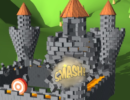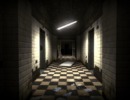Advertisement
Sharks and Minnows




 (No Ratings Yet)
(No Ratings Yet)Advertisement
Game information

Game title: Sharks and Minnows
Sharks And Minnows places the player in a sealed aquatic training center overtaken by an unseen presence. The central mechanic revolves around swimming across a vast, dimly lit pool ten times, with each completed lap pushing the environment deeper into distortion. What seems like a structured challenge quickly becomes a shifting maze of flooded corridors, locked storage rooms, and submerged hallways. The game blends stamina-based movement with psychological horror, turning simple traversal into a life-threatening ordeal.
Movement, Recovery, and Timing
The player’s survival is tied directly to their stamina meter, which drains rapidly while swimming. If stamina runs out mid-lap, the player loses consciousness and fails the attempt. Between laps, players must venture away from the pool into maintenance rooms, locker areas, and mechanical wings in search of resources. These include stamina boosts, temporary speed items, and rare keys to locked side doors. Choosing when to pause and when to continue becomes a core part of the strategy, especially as the environment becomes harder to navigate.
Player Tasks and Interactive Features
Throughout the game, players rely on several systems to complete their escape:
- Managing stamina and timing while in the water
- Exploring off-route areas for survival items
- Interpreting visual and audio signals that hint at danger
- Avoiding contact with increasingly aggressive environmental anomalies
- Tracking which doors and shortcuts were opened in previous laps
These tools are limited, and their effectiveness decreases as the facility itself reacts to player behavior.
Shifting Reality and Adaptive Threats
Each lap causes subtle changes in the swim center’s layout. Familiar spaces grow darker, paths twist, and storage rooms may disappear or reappear in new forms. Shadows stretch longer, doors slam without warning, and sometimes the pool itself seems to breathe. Threats begin indirectly—missing reflections, distorted announcements—but eventually become physical. The game never introduces a visible enemy, instead using atmospheric pressure and location shifts to make players question every step.
When a run ends, not all progress is lost. Small clues, patterns, and discovered routes carry over, allowing the player to make better decisions in future attempts. Some objects appear only after specific conditions are met, and certain areas remain hidden until the later laps.















